
Lasar Segall was a Lithuanian Jewish and Brazilian painter, engraver and sculptor. Segall's work is derived from impressionism, expressionism and modernism. His most significant themes were depictions of human suffering, war, persecution and prostitution.
Brígida Baltar was a Brazilian visual artist. Her work spanned across a wide range of mediums, including video, performance, installation, drawing, and sculpture. She was interested in capturing the ephemeral in her artwork.

The creation of art in the geographic area now known as Brazil begins with the earliest records of its human habitation. The original inhabitants of the land, pre-Columbian Indigenous or Natives peoples, produced various forms of art; specific cultures like the Marajoara left sophisticated painted pottery. This area was colonized by Portugal in the 16th century and given the modern name of Brazil. Brazilian art is most commonly used as an umbrella term for art created in this region post Portuguese colonization.

Hélio Oiticica was a Brazilian visual artist, sculptor, painter, performance artist, and theorist, best known for his participation in the Neo-Concrete Movement, for his innovative use of color, and for what he later termed "environmental art", which included Parangolés and Penetrables, like the famous Tropicália. Oiticica was also a filmmaker and writer.

Ernesto Saboia de Albuquerque Neto is a contemporary visual artist.

Albuquerque Mendes is a Portuguese artist. He works in the fields of painting, performance art and installation.
Roberto Cabot is a Brazilian visual artist.
Marcus Coates is a contemporary artist and ornithologist living in London. His works, including performances and installations that have been recorded as video art, employ shamanistic rituals in communication with "the lower world", and contrast natural and man-made processes.
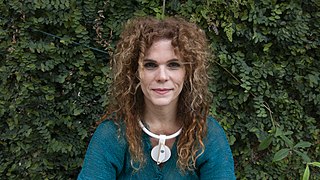
Laura Lima is a contemporary Brazilian artist who lives and works in Rio de Janeiro. Since the 1990s, Lima has discussed in her works the matter of alive beings, among other topics. Her works can be found in the collections of institutions such as Bonniers Konsthall, Stockholm, Sweden; Inhotim Institute, Brumadinho, Brazil; MAM - Museum of Modern Art, São Paulo, Brazil; Migros Museum für Gegenwartskunst, Zurich, Switzerland; Pinacoteca of the State of São Paulo, Brazil; Itaú Cultural, São Paulo, Brazil; Pampulha Museum of Art, Belo Horizonte, Brazil; National Museum of Fine Arts, Rio de Janeiro, Brazil; Hammer Museum, Los Angeles, USA; MASP - Museum of Art of São Paulo, Brazil, among others.
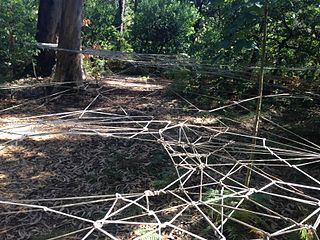
Fernanda Gomes is a Brazilian visual artist. She emerged as part of the generation of Rio de Janeiro-born artists that also include Beatriz Milhazes, Ernesto Neto and Adriana Varejão. With a career that began in the 1980s, her first solo exhibition took place in London in 1997.
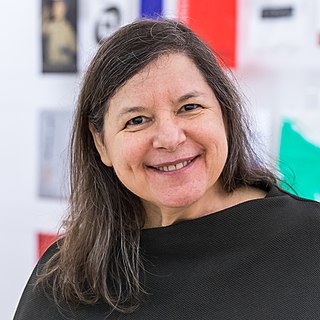
Jacqueline "Jac" Leirner, is a Brazilian artist. Leirner is best known for the sculptures and installations she creates from mundane objects and ephemera, including devalued bank notes, used envelopes, promotional tickets, empty packs of cigarettes and plastic shopping bags.
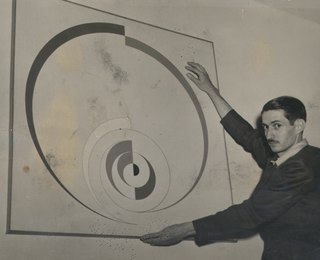
Ivan Ferreira Serpa was a Brazilian painter, draftsman, printmaker, designer, and educator active in the concrete art movement. Much of his work was in geometric abstractionism. He founded Grupo Frente, which included fellow artists Lygia Clark, Helio Oiticica, and Franz Weissmann, among others, and was known for mentoring many artists in Brazil.
Vera Chaves Barcellos is a Brazilian artist and educator. She was featured in the Radical Women show at the Brooklyn Museum in 2018.
Renata Lucas is a Brazilian artist.
Valeska Soares is a Brooklyn-based Brazilian-American sculptor and installation artist.

Wanda Pimentel was a Brazilian painter, based in Rio de Janeiro, Brazil. Her work is distinguished by "a precise, hard-edge quality encompassing geometric lines and smooth surfaces in pieces that often defy categorization as abstract or figurative. “My studio is in my bedroom,” Pimentel said in an interview. “Everything has to be very neat. .. I work alone. I think my issues are the issues of our time: the lack of perspective for people, their alienation. The saddest thing is for people to be dominated by things.”
Teresinha Soares is a Brazilian pop art artist who currently lives and works in Belo Horizonte, Brazil. She produced art during the 1960s and 1970s and was best known for her erotic artwork that explored femininity and pushed back against Brazil's oppressive government.
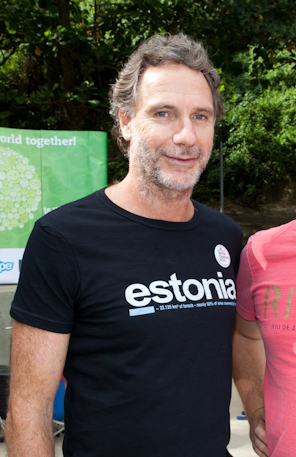
Oskar Metsavaht is a Brazilian artist, academic degree in medicine, fashion designer environmental activist and Amazon guardian. Oskar's work expresses the theme of preserving the forest, water and the empowerment and protection of the peoples of the forest, as an artist, designer and activist. He is founder and creative director of Osklen, a Brazilian fashion brand, recognized as one of the forerunners of the New Luxury concept that strives for the fusion between ethics and aesthetics and advocates conscious fashion through the adoption of sustainable practices. Creative Director of OM.art studio, where he hosts his art studio, an exhibition space and the studio for the development and production of art projects. Metsavaht serves as UNESCO Goodwill Ambassador. Creator of Janeiro Hotel, located in Leblon, Rio de Janeiro. He is also on the advisory board of the Inhotim Institute and board member of Museum of Modern Art (MAM) of Rio de Janeiro. In 2014, Oskar Metsavaht was awarded as Knight of Ordem do Mérito Cultural medal from the Ministry of Culture (Brazil) an honorary order granted by the Federal Government to personalities and institutions that make relevant contributions to Brazil's culture.
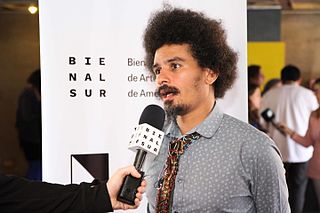
Paulo Nazareth is a Brazilian contemporary artist based in Belo Horizonte, Brazil.
Vicente Todolí is a Spanish contemporary art curator who has worked as the director of several museums and art centres internationally, including the Tate Modern in London.












